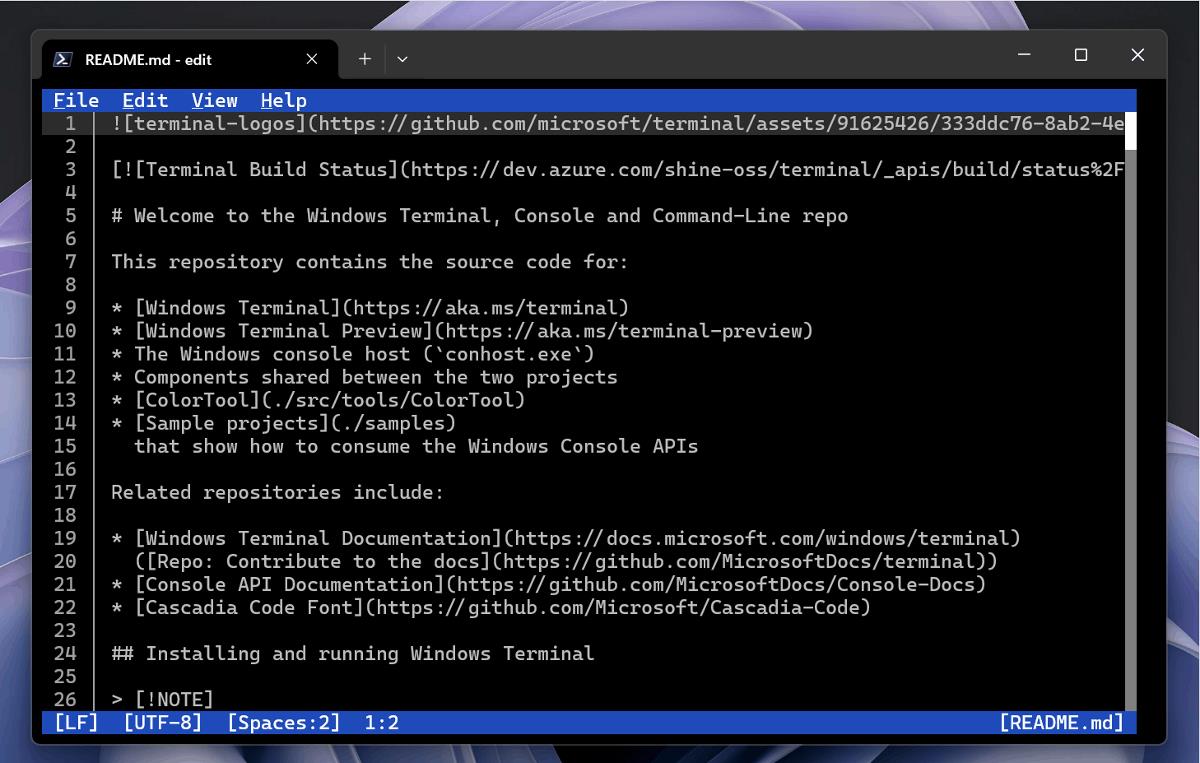Exploring the Evolution of ECMAScript Standards
Exploring the Evolution of ECMAScript Standards: A Comprehensive Guide The ECMAScript standard — often referred to simply as ES — forms the backbone of JavaScript. As the language has progressed through pivotal stages of evolution, the ECMAScript standards have provided structure, performance benefits, and new capabilities that enhance developer productivity and user experience in web applications. This article examines the historical context, technical advancements, implementation techniques, and performance considerations, providing an exhaustive resource for senior developers. Historical Context Early Days: JavaScript (1995-1999) JavaScript was initially created by Brendan Eich at Netscape in 1995. It was designed for front-end web development, allowing developers to create interactive web pages. However, without formal standardization, the language suffered from inconsistencies across web browsers, leading to significant compatibility issues. To address these shortcomings, ECMAScript was established by ECMA International. The first version, ECMAScript 1 (ES1), was published in June 1997 as a standardization of JavaScript. Evolution of ECMAScript Standards (ES2-ES5) ES2 (1998): Introduced some informal changes and enhancements to the specification without altering the language's core features significantly. ES3 (1999): This version featured additions like regular expressions, try/catch exception handling, and enhanced string manipulation functions. These innovations improved the language's utility. ES4: Proposed but ultimately abandoned due to complexity and heated contention among stakeholders. ES4 aimed to introduce significant changes, including static typing and class-based inheritance, but the incompatibilities proved too challenging for consensus. ES5 (2009): A monumental revision, ES5 focused on improving the language's usability and introducing "strict mode," which provides a strict interpretation of JavaScript and helps avoid common pitfalls. Also important were the addition of Array methods like map, forEach, and the Object.defineProperty method, which allows for more control over object properties. The Modern Era: ES6 and Beyond (2015-Present) With the advent of ECMAScript 2015 (commonly known as ES6), a gradual transition from smaller revisions to annual updates began. ES6 introduced a plethora of features, ushering in modern JavaScript, including: Arrow Functions: Simplified function syntax preserving lexical this. Classes: A more familiar syntax for classical inheritance. Modules: Native support for module systems to manage dependencies and improve code organization. Promises: Facilitated asynchronous programming, enabling clean handling of asynchronous operations. Subsequent annual editions, including ES7 (2016), ES8 (2017), ES9 (2018), and newer versions, have consistently built upon this foundational structure, introducing exciting features like async/await, native modules, and improved performance features. Advanced Code Examples Example 1: Arrow Functions and this Binding Arrow functions provide a syntactically concise way to express functions while lexically binding this, simplifying the scope handling in nested functions. class Counter { constructor() { this.count = 0; this.increment = () => { this.count++; console.log(this.count); }; } } const counter = new Counter(); setInterval(counter.increment, 1000); // Logs: 1, 2, 3, ... every second. In contrast, using traditional functions would lose the correct context for this within the setInterval. Example 2: ES6 Modules ES6 introduced a robust and native module system for JavaScript, enabling clean dependency management. lib.js export const pi = 3.14; export function calculateCircumference(radius) { return 2 * pi * radius; } main.js import { pi, calculateCircumference } from './lib.js'; const radius = 5; console.log(`Circumference: ${calculateCircumference(radius)}`); Example 3: Handling Asynchronous Code with Promises Before ES6, callbacks were the conventional approach to handling asynchronous operations. However, using promises results in cleaner, more maintainable code. function fetchData(url) { return new Promise((resolve, reject) => { fetch(url) .then(response => { if (!response.ok) throw new Error('Network response was not ok'); return response.json(); }) .then(data => resolve(data)) .catch(error => reject(error)); }); } fetchData('https://api.example.com/data') .then(data => console.log(data)) .catch(error => console.error('Fetch error:', error)); This encapsulates asynchronous operations, making the code more linear and easier to comprehend. Edge Cases and Advanced Implementation Techniques

Exploring the Evolution of ECMAScript Standards: A Comprehensive Guide
The ECMAScript standard — often referred to simply as ES — forms the backbone of JavaScript. As the language has progressed through pivotal stages of evolution, the ECMAScript standards have provided structure, performance benefits, and new capabilities that enhance developer productivity and user experience in web applications. This article examines the historical context, technical advancements, implementation techniques, and performance considerations, providing an exhaustive resource for senior developers.
Historical Context
Early Days: JavaScript (1995-1999)
JavaScript was initially created by Brendan Eich at Netscape in 1995. It was designed for front-end web development, allowing developers to create interactive web pages. However, without formal standardization, the language suffered from inconsistencies across web browsers, leading to significant compatibility issues.
To address these shortcomings, ECMAScript was established by ECMA International. The first version, ECMAScript 1 (ES1), was published in June 1997 as a standardization of JavaScript.
Evolution of ECMAScript Standards (ES2-ES5)
- ES2 (1998): Introduced some informal changes and enhancements to the specification without altering the language's core features significantly.
- ES3 (1999): This version featured additions like regular expressions, try/catch exception handling, and enhanced string manipulation functions. These innovations improved the language's utility.
- ES4: Proposed but ultimately abandoned due to complexity and heated contention among stakeholders. ES4 aimed to introduce significant changes, including static typing and class-based inheritance, but the incompatibilities proved too challenging for consensus.
-
ES5 (2009): A monumental revision, ES5 focused on improving the language's usability and introducing "strict mode," which provides a strict interpretation of JavaScript and helps avoid common pitfalls. Also important were the addition of Array methods like
map,forEach, and the Object.defineProperty method, which allows for more control over object properties.
The Modern Era: ES6 and Beyond (2015-Present)
With the advent of ECMAScript 2015 (commonly known as ES6), a gradual transition from smaller revisions to annual updates began. ES6 introduced a plethora of features, ushering in modern JavaScript, including:
-
Arrow Functions: Simplified function syntax preserving lexical
this. - Classes: A more familiar syntax for classical inheritance.
- Modules: Native support for module systems to manage dependencies and improve code organization.
- Promises: Facilitated asynchronous programming, enabling clean handling of asynchronous operations.
Subsequent annual editions, including ES7 (2016), ES8 (2017), ES9 (2018), and newer versions, have consistently built upon this foundational structure, introducing exciting features like async/await, native modules, and improved performance features.
Advanced Code Examples
Example 1: Arrow Functions and this Binding
Arrow functions provide a syntactically concise way to express functions while lexically binding this, simplifying the scope handling in nested functions.
class Counter {
constructor() {
this.count = 0;
this.increment = () => {
this.count++;
console.log(this.count);
};
}
}
const counter = new Counter();
setInterval(counter.increment, 1000);
// Logs: 1, 2, 3, ... every second.
In contrast, using traditional functions would lose the correct context for this within the setInterval.
Example 2: ES6 Modules
ES6 introduced a robust and native module system for JavaScript, enabling clean dependency management.
lib.js
export const pi = 3.14;
export function calculateCircumference(radius) {
return 2 * pi * radius;
}
main.js
import { pi, calculateCircumference } from './lib.js';
const radius = 5;
console.log(`Circumference: ${calculateCircumference(radius)}`);
Example 3: Handling Asynchronous Code with Promises
Before ES6, callbacks were the conventional approach to handling asynchronous operations. However, using promises results in cleaner, more maintainable code.
function fetchData(url) {
return new Promise((resolve, reject) => {
fetch(url)
.then(response => {
if (!response.ok) throw new Error('Network response was not ok');
return response.json();
})
.then(data => resolve(data))
.catch(error => reject(error));
});
}
fetchData('https://api.example.com/data')
.then(data => console.log(data))
.catch(error => console.error('Fetch error:', error));
This encapsulates asynchronous operations, making the code more linear and easier to comprehend.
Edge Cases and Advanced Implementation Techniques
Handling Edge Cases in Promises
There are special considerations when dealing with promises, particularly in error handling. Using .catch universally helps ensure that uncaught errors don’t crash the application.
However, it's essential to consider race conditions when multiple promises are running concurrently. Using Promise.all() can help synchronize promise resolutions while enforcing that all promises succeed or fail collectively:
const p1 = Promise.resolve(3);
const p2 = new Promise((resolve, reject) => setTimeout(resolve, 100, 'foo'));
const p3 = 42;
Promise.all([p1, p2, p3])
.then(values => {
console.log(values);
})
.catch(error => {
console.error('Error in one of the promises:', error);
});
Advanced Class Inheritance
Using ES6 classes simplifies inheritance. However, pitfalls can arise if not utilized correctly, particularly regarding calling the super() constructor.
class Shape {
constructor(color) {
this.color = color;
}
}
class Circle extends Shape {
constructor(color, radius) {
super(color); // Must call super before using 'this'
this.radius = radius;
}
}
Failure to invoke super() correctly yields a ReferenceError. This illustrates the criticality of understanding the constructor's behavior.
Real-World Use Cases
- Frameworks like React: Utilize a component-based structure driven by ES6 classes and functional components using hooks.
- Node.js Applications: Leverage modules for organizing server-side code, along with async features that enhance performance in database operations.
Performance Considerations and Optimization Strategies
JavaScript engines, such as V8 (used in Chrome and Node.js), have become highly optimized. However, poor coding practices can de-optimize these engines.
Memory Management: Use closures judiciously. While they provide convenience, they can lead to memory leaks if uncaptured references persist.
Asynchronous Programming: With operations such as
Promise.all(), it's crucial to batch asynchronous requests to preserve connection limits and avoid concurrency-related bottlenecks.Use of
constandlet: Preferconstfor values that should not change. It helps with optimization as JavaScript engines perform better when they can predict variable behaviors.Avoiding the "Callback Hell": By using promises, async/await, or even better, employing generators, developers can structure asynchronous code in a way that enhances readability and maintainability.
Pitfalls and Debugging Techniques
Debugging Contextual Issues: Given the context-sensitive nature of
this, developers should be vigilant while debugging arrow functions versus normal functions. Using tools like Chrome DevTools, breakpoints can clarify the context at runtime.Promise Debugging: Utilizing
.finally()can provide hooks after completion regardless of success or failure, simplifying cleanup.Use Linting Tools: Tools such as ESLint can catch potential issues before they escalate into runtime errors, which is especially beneficial in larger teams.
Performance Profiling: Engaging tools like Chrome's performance analysis tools can unearth bottlenecks related to JavaScript execution, memory usage, and network handling.
References and Resources
- ECMAScript Specification
- MDN Web Docs - JavaScript Reference
- JavaScript.info - The Modern JavaScript Tutorial
- Node.js Official Documentation
- Google Developers - V8 JavaScript Engine
Conclusion
The evolution of ECMAScript has transformed JavaScript into a multifaceted language capable of serving as the backbone of modern web applications. This comprehensive exploration of standards, code samples, performance considerations, and debugging techniques offers both depth and practical insights for senior developers, ensuring they are well-equipped to leverage the full potential of JavaScript in their work. Understanding the ECMAScript standards not only enhances application robustness but also prepares developers for the exciting possibilities and challenges that lie in the future of web development.












































































































































































![[The AI Show Episode 148]: Microsoft’s Quiet AI Layoffs, US Copyright Office’s Bombshell AI Guidance, 2025 State of Marketing AI Report, and OpenAI Codex](https://www.marketingaiinstitute.com/hubfs/ep%20148%20cover%20%281%29.png)


![[The AI Show Episode 146]: Rise of “AI-First” Companies, AI Job Disruption, GPT-4o Update Gets Rolled Back, How Big Consulting Firms Use AI, and Meta AI App](https://www.marketingaiinstitute.com/hubfs/ep%20146%20cover.png)













































































































































































































































.jpg?#)

























_Prostock-studio_Alamy.jpg?width=1280&auto=webp&quality=80&disable=upscale#)















































































































![Apple's iPhone Shift to India Accelerates With $1.5 Billion Foxconn Investment [Report]](https://www.iclarified.com/images/news/97357/97357/97357-640.jpg)
![Apple Releases iPadOS 17.7.8 for Older Devices [Download]](https://www.iclarified.com/images/news/97358/97358/97358-640.jpg)








































































